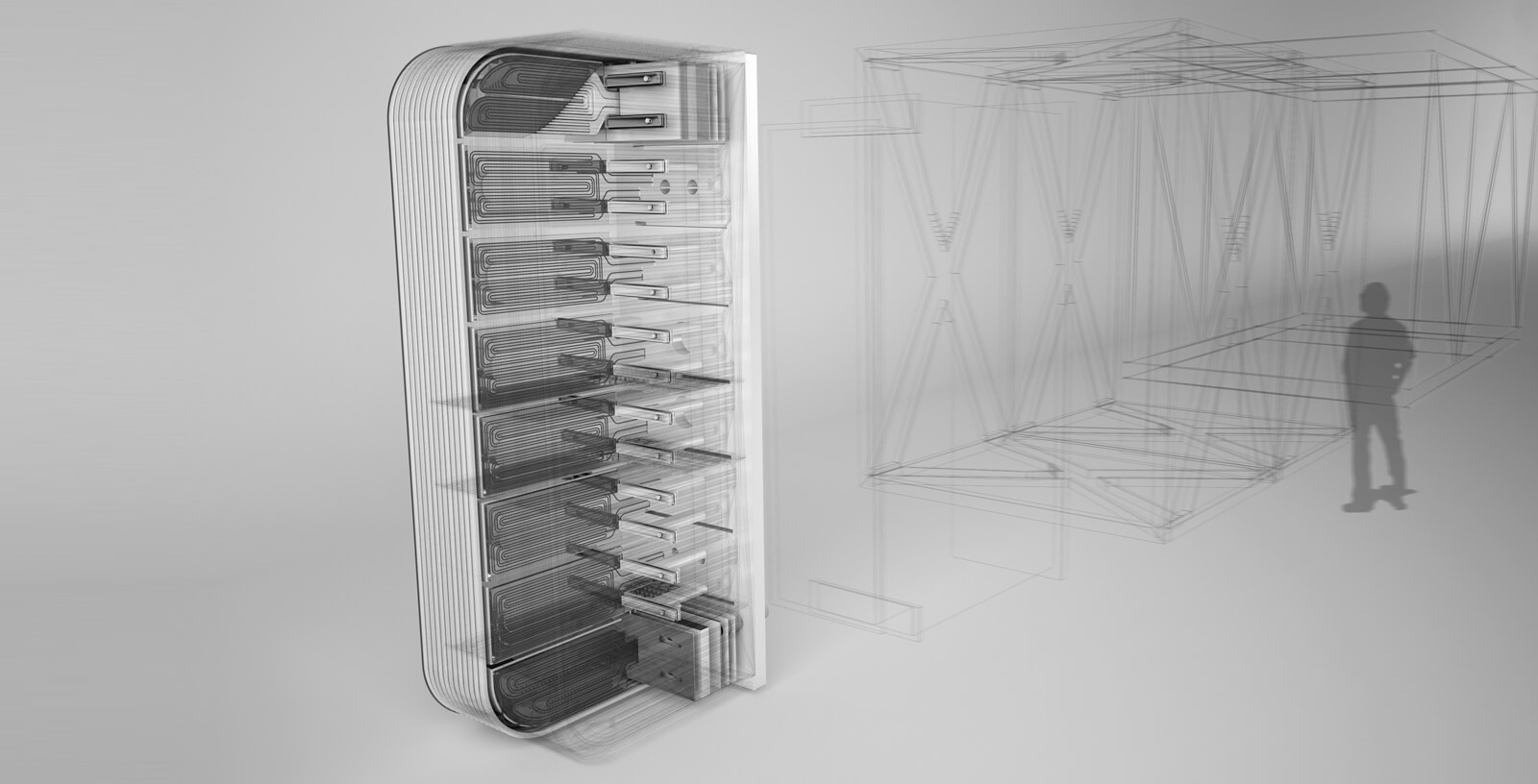Design and analysis engineering of the ITER European TBMs
France
Europe is developing two reference tritium breeder blanket concepts to be tested in ITER as Test Blanket Modules (TBMs): the Helium-Cooled Lithium-Lead (HCLL) and the Helium-Cooled Pebble Bed (HCPB). IDOM, in collaboration with Fusion for Energy, is investigating the technical feasibility of new TBM (Test Blanket Module) concepts, HCLL (Helium-Cooled Lithium-Lead) and HCPB (Helium-Cooled Pebble-Bed), to reduce their ferritic-martensitic steel content, as recent studies have shown that a significant presence of ferromagnetic material in the vacuum vessel could hinder the achievement of certain plasma control objectives in ITER.
The Helium-Cooled Lithium-Lead (HCLL), using liquid Pb-16Li as both breeder and neutron multiplier, and the Helium-Cooled Pebble Bed (HCPB), using lithiated ceramic pebbles as breeder and beryllium pebbles as neutron multiplier, use EUROFER reduced activation ferritic-martensitic steel as structural material and pressurized helium technology for heat extraction.
Several tasks have been undertaken for the thermomechanical and thermohydraulic design and analysis of the TBMs under thermal, internal pressure and seismic loads.
Under F4E-GRT-288, the final objective of the work was to provide a preliminary assessment of the feasibility of three different alternative TBM configurations that significantly reduce or even eliminate the use of Eurofer97 (ferritic-martensitic steel). Under contract F4E-2008-OPE-011-01-01-16, preliminary analyses were carried out in ANSYS to assess the seismic response of the TBM set. All this work was to be extended under contract F4E-OMF-331-01-01, where some new advanced analysis methods were to be implemented.
Several FE models have been developed in the context of this work, but they can generally be divided into two groups: those developed to analyze the effects at the local TBM level of internal pressure and transient thermal loads, and those developed at the global TBM set + port plug frame + VV equatorial port level to assess gravity and seismic loads. A wide range of analyses have been carried out, including complex transient thermomechanical analyses.








